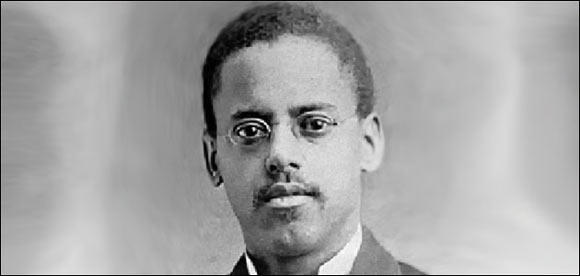Lewis Latimer invented “Carbon-filament Light Bulb”
Lewis Howard Latimer was one of the first African-American inventors of repute in the United States of America. He was born on 4 September 1848 to George and Rebecca Latimer, who had previously been slaves in Virginia. Although the couple managed to escape, George was later recaptured and brought to trial. In a famous case of abolition, with the help of noted abolitionists William Lloyd Garrison and Frederick Douglass, funds were raised to buy George’s freedom from his owner. He was then freed and decided to raise his family in Chelsea. However, in 1857, George abandoned his family and fled, probably as a result of being scared for his freedom after the ruling of the Dred Scott court case that was decidedly against the black community.
Latimer worked to support his family from an early age. In 1864, before he had even turned 16, he enlisted in the Navy (probably having lied about his age to gain admission), and was honorably discharged after two years of service. On his return, he sought and received employment at the Crosby and Gould patent law office for $3 a week. Here he learned mechanical drawing and drafting, although his official duties were those of an office boy. His employer soon realized his skills in drawing and drafting and promoted him to head draftsman, where he earned a much better wage. By 1872 his salary had increased to $20 per week. In 1873, he married Mary Wilson Lewis, and the couple had two daughters named Emma Jeanette and Louise Rebecca.
During his employment at Crosby and Gould, Latimer worked as a draftsman for Graham Bell and helped him to draw up his patent application for the telephone. Bell was able to finish his application and submit it to the patent office just a few hours before his competitors did, and this was in no small part due to Latimer’s efforts. In 1879, Latimer moved to Bridgeport, Connecticut with his wife Mary, his brother William and his wife, and his mother. The rest of his family already lived there. He found employment with “The U.S. Electric Light Company of Bridgeport, CN” owned by Hiram S. Maxim, a direct competitor of Thomas Edison. Here he worked as an assistant manager and draftsman and invented a method of making improved and longer-lasting carbon filaments for Maxim’s electric incandescent lamps. He received a patent for it in 1881.
In 1884, he was hired by “The Edison Electric Light Company” in New York City as an expert draftsman. In addition, was also a key witness in patent litigation that Edison was facing. He was also the only African American member of the twenty-four engineers in the engineering division of the Edison Company. In 1890, Latimer published a book entitled “Incandescent Electric Lighting” and continued to work with the company even after it became General Electric in 1892. In 1911, he began working as a patent consultant for law firms.
Latimer was inducted into “the National Inventors Hall of Fame” for his work on bulb filaments. He was actively involved in the Unitarian Church and supported Civil War veterans. Apart from his work, he took an active interest in music and could play the flute. He also wrote plays and poetry, and worked with immigrants to teach them English and drawing. He died in 1928 in New York at the age of 80.
